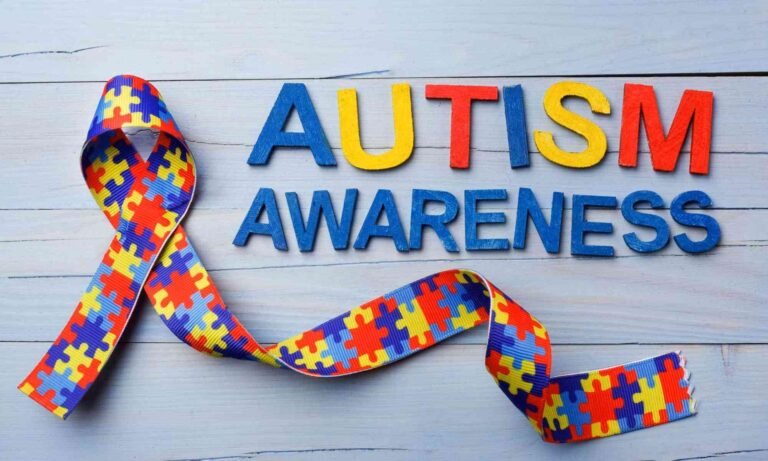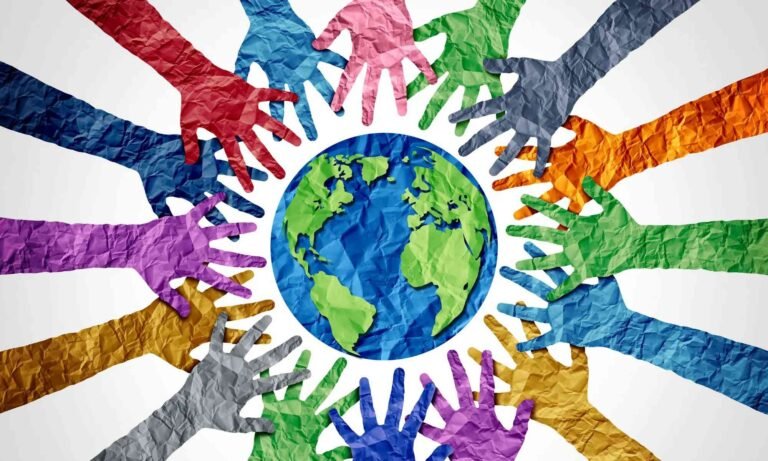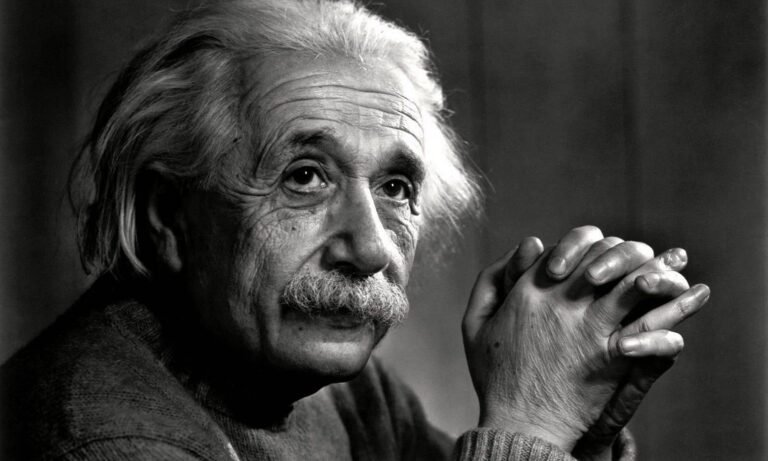The butterfly effect is a captivating concept that originated from Chaos Theory, highlighting how minor variations in initial conditions can trigger significant and often unpredictable consequences. The metaphorical image of a butterfly flapping its wings in one part of the world and ultimately causing a distant hurricane encapsulates this principle. This vivid illustration underscores the notion that seemingly inconsequential actions or changes can produce far-reaching effects, transforming the landscape in profound ways.
In the realm of chaos theory, which studies complex systems and their sensitivity to initial conditions, the butterfly effect exemplifies how intricate interdependencies exist within these systems. Originating from the work of mathematician Edward Lorenz in the 1960s, the term has since gained a broader application beyond meteorology to various disciplines including economics, sociology, and personal decision-making. In economics, for instance, minor fluctuations in market sentiment can lead to significant financial repercussions, demonstrating the interconnectedness of various economic factors.
Additionally, the implications of the butterfly effect extend into personal life. Through daily decisions, such as a chance meeting or a seemingly trivial choice, individuals can unknowingly set off a cascade of events that shapes their future. This underscores a powerful message: small actions matter. Understanding this concept can empower individuals to consider their choices carefully, recognizing that their actions may contribute to larger trends over time.
Historical Context and Origin
The concept of the butterfly effect is fundamentally rooted in the early developments of chaos theory, a branch of mathematics and physics that studies the behavior of dynamical systems that are highly sensitive to initial conditions. Its origins can be traced back to the pioneering work of meteorologist Edward Lorenz in the early 1960s. Lorenz, who was engaged in weather prediction, stumbled upon the idea while running a computer simulation of weather patterns. He discovered that a minuscule alteration in the initial input data – specifically, rounding the number 0.506127 to 0.506 – led to dramatically different outcomes in weather predictions.
This observation transformed Lorenz’s understanding of meteorology and emphasized the notion that small changes could have significant, unpredictable effects on complex systems. Consequently, his findings were formalized into what we now understand as chaos theory, which asserts that in non-linear systems, simple actions can lead to complex consequences. The phrase “butterfly effect” itself was popularized by Lorenz during a lecture in 1972, where he illustrated this phenomenon with the metaphor that a butterfly flapping its wings in Brazil could set off a tornado in Texas, highlighting the interconnectedness and unpredictability inherent in chaotic systems.
The Science Behind the Butterfly Effect
The butterfly effect is a concept rooted in chaos theory, illustrating how minor changes in initial conditions can lead to disproportionately larger outcomes. It’s closely linked to the work of mathematician and meteorologist Edward Lorenz, who discovered that tiny adjustments in weather models could drastically alter predictions. Such sensitivity is a hallmark of chaotic systems, where predictability fades over time.
In these systems, small inputs can produce wide-ranging outputs, reflecting their non-linear nature. The iconic image of a butterfly’s wings triggering distant weather shifts highlights this unpredictability. Even trivial events can spark chain reactions with global consequences.
Mathematics helps explain this phenomenon through dynamic systems modeled by differential equations. Small initial differences can result in entirely different trajectories – a reality seen across physics, economics, and biology. In population studies, for instance, a subtle shift in birth rates can reshape entire ecosystems.
Social systems reflect similar dynamics. A community adopting sustainable habits may inspire wider societal change with long-term environmental effects. Across disciplines, the butterfly effect underscores how deeply interconnected the world is, and how even the smallest decisions can ripple outward in powerful ways. It’s a humbling insight into the fragility – and potential – of systems shaped by seemingly modest beginnings.
“You have been created in order that you might make a difference. You have within you the power to change the world.”
– Andy Andrews
Examples in Nature
The butterfly effect is a compelling reminder that small shifts can create massive outcomes, especially in nature. In meteorology, slight changes in temperature or air pressure can snowball into full-blown storms across great distances. This sensitivity underscores how weather systems hinge on delicate balances that are easily tipped. Though the idea of a butterfly’s wings sparking a tornado is symbolic, it captures the truth of how fragile and responsive weather systems really are.
This concept also surfaces in biology, like when gray wolves were reintroduced to Yellowstone. That single action reshaped the ecosystem: deer populations fell, vegetation regenerated, and even rivers changed course as plants stabilized the soil. One species triggered a cascading effect across the entire landscape, showing how intricately every element in nature is connected.
Climate science echoes this interconnectedness. Small, everyday actions – like using electricity or driving – emit greenhouse gases that collect over time. These tiny inputs contribute to global-scale outcomes: melting glaciers, rising sea levels, disrupted weather. So whether it’s atmospheric turbulence, ecological balance, or the climate crisis, the butterfly effect teaches us how even the smallest decision can carry surprising power.
The Butterfly Effect in Social and Economic Systems
The butterfly effect, a concept originating from chaos theory, illustrates how seemingly insignificant actions can precipitate substantial outcomes in complex systems, particularly within social and economic contexts. This phenomenon underscores the intricate interconnections between individual decisions and broader societal trends. A prime example can be seen in consumer behavior; small shifts in purchasing patterns, driven by individual choices, can influence market dynamics and drive larger economic trends. For instance, the increasing consumer preference for sustainable products has led to a burgeoning market for environmentally-friendly goods, prompting companies to adapt their strategies accordingly.
Similarly, the butterfly effect can be observed in political scenarios where minor decisions or events catalyze significant movements. Historical examples abound, such as the Montgomery Bus Boycott initiated by Rosa Parks’ refusal to give up her seat. This singular act of defiance sparked a larger civil rights movement, demonstrating how small, personal actions can unify individuals and lead to transformative societal changes. In this case, the butterfly effect not only altered the legal landscape regarding segregation but also empowered communities to advocate for broader social justice reform.
Furthermore, in economic settings, minor adjustments in policy or regulation can have reverberating implications. For example, a slight change in tax legislation can incentivize new business ventures, ultimately stimulating job creation and impacting the wider economy. The interconnectedness of global markets amplifies this effect, as local economic policies can resonate across borders, demonstrating how small changes can lead to extensive ramifications on an international scale.
In essence, the butterfly effect serves as a vital reminder that individual actions, no matter how inconsequential they may appear, can contribute to profound societal and economic shifts. Understanding this phenomenon equips individuals and policymakers alike with the insight needed to recognize the potential impact of their decisions on larger social and economic systems.
The Butterfly Effect in Personal Life
The Butterfly Effect represents the delicate interplay between small actions and significant consequences, a concept that extends well into the realm of personal life. Each decision we make, regardless of its perceived magnitude, can influence our journey in profound ways. For instance, a casual conversation with a stranger might lead to an unexpected job opportunity or a new friendship that enriches our lives. Similarly, choosing to take a different route to work could result in encountering a life-altering event or a chance meeting that changes the course of our day.
Reflecting on the Butterfly Effect encourages individuals to recognize the importance of seemingly minor daily choices. For example, opting to engage in a healthy habit, such as beginning a morning routine of exercise or meditation, can radically transform one’s physical and mental well-being over time. Conversely, neglecting self-care can lead to cumulative negative effects that reshape one’s lifestyle. Such examples illustrate how our everyday actions contribute to the overarching narrative of our lives, ultimately creating a tapestry woven from our individual experiences.
Mindfulness plays a crucial role in understanding the Butterfly Effect in personal life. By consciously considering the impacts of our decisions, we gain insight into how small changes can create significant outcomes. Being present in each moment helps in recognizing opportunities and taking calculated risks that align with our aspirations. This self-awareness fosters a proactive approach to life, encouraging us to make intentional choices rather than passively allowing events to unfold. From the small act of expressing gratitude to pursuing new endeavors, each choice serves as a potential catalyst for growth and transformation.
As we navigate through life’s intricacies, embracing the Butterfly Effect invites us to appreciate the power inherent in our small choices. By fostering an environment of awareness and mindfulness, we can harness the potential of these small yet significant decisions, ultimately leading to a richer and more fulfilling personal journey.
The Butterfly Effect and Karma
The butterfly effect and Karma both explore how seemingly minor actions can unfold into significant outcomes – yet they arise from vastly different philosophies. The butterfly effect, rooted in chaos theory, illustrates the sensitivity of complex systems: where a minuscule input (like a butterfly’s wing flap) might lead to unpredictable, large-scale consequences in weather patterns or even human events. It’s a reminder that systems – be they environmental, social, or personal – can be radically altered by small shifts at the right moment.
Karma, in contrast, is steeped in spiritual tradition. Originating in Hinduism, Buddhism, and other Eastern belief systems, karma presents a moral framework where intention and action shape one’s destiny. It doesn’t work on randomness like the butterfly effect but rather on ethical causality: the good or bad energy we put into the world finds its way back to us, eventually. Karma is personal, designed to guide behavior with an awareness of long-term consequences, even across lifetimes.
Despite their differences, these concepts converge in their profound message: everything we do matters. The butterfly effect shows how deeply interconnected we are through the systems around us, while karma emphasizes accountability and conscious living. Together, they offer a compelling lens – scientific and spiritual – through which to understand the weight of our choices and the mystery of our influence on the world. It’s a poetic reminder that even the smallest flutter of intention can shape the future in ways we may never fully grasp.
Criticisms and Misunderstandings
The butterfly effect illustrates how minor changes can lead to significant impacts across natural systems. In meteorology, small fluctuations in air pressure or temperature – sometimes sparked by localized phenomena – can snowball into major weather events like hurricanes or tornadoes. Though the idea of a butterfly’s wings influencing a storm is metaphorical, it conveys the fragility and complexity of climate systems.
In biology, subtle shifts can reshape ecosystems entirely. A striking example is the reintroduction of gray wolves to Yellowstone National Park. Their presence reduced overgrazing by deer, which allowed vegetation to recover, riverbanks to stabilize, and other species to flourish. A single ecological change rippled outward to rejuvenate the entire landscape.
Environmental science echoes this on a planetary scale. Seemingly small actions – such as everyday energy use or transportation choices – emit greenhouse gases that accumulate over time, intensifying global warming. Rising seas, extreme weather, and melting glaciers aren’t just macro-level phenomena – they’re rooted in countless micro-level decisions. Together, these examples show how deeply interconnected and reactive our natural world is, and why even the smallest actions carry remarkable power.
Implications of the Butterfly Effect
The idea of the butterfly effect extends beyond the realms of science and mathematics, infiltrating various domains such as philosophy, ethics, and decision-making. By analyzing the broader implications of the butterfly effect, we gain insight into the interconnected nature of our actions and the responsibility that accompanies our choices. It encourages reflection on how even the smallest decisions can echo through time and influence outcomes far beyond our awareness.
- From a philosophical perspective, the butterfly effect challenges traditional notions of causality and determinism. It encourages the contemplation of how individual decisions, no matter how trivial, can ripple through time and shape significant events. This perspective promotes a deeper understanding of individual agency and the impact of human behavior on collective outcomes. Recognizing that each decision contributes to a larger narrative empowers individuals to act with intention and awareness, fostering a more interconnected societal outlook.
- Ethically, the implications of the butterfly effect are considerable. It raises essential questions about moral responsibility: if one acknowledges that small actions can lead to widespread consequences, what does that mean for ethical decision-making? Individuals must grapple with the potential ramifications of their choices, instilling a sense of duty to consider how their actions may influence others. This awareness does not negate the unpredictability of outcomes; instead, it emphasizes the importance of thoughtful and responsible decision-making.
- In decision-making processes, the butterfly effect serves as a reminder of the intricate web of cause and effect that exists in our lives. It encourages individuals and organizations alike to approach decisions with caution, considering the far-reaching outcomes that might result from seemingly insignificant actions. By understanding this principle, one is better equipped to navigate complex choices, aligning actions with desired future outcomes.
What’s More
The posts in My Blog explore reflective and narrative-driven themes, often tied to personal experiences or societal observations, emphasizing storytelling and commentary.
Dependence (10) Fiction (10) Karma (10) Landmarks (10) Paramount (10) Spectrum (10) Spotlight (10) Take Off (10) Terra Shapes (10) Trepidation (10) Unique (10) Virtue (10)
Selecting an option will take you to that post.
(120)
The topics in My Interests examine broad, conceptual, and philosophical ideas, emphasizing exploration of abstract notions and their deeper cultural and societal implications.
Amazing Stuff (10) Beyond Known (10) Controversial (10) Digital World (10) Inequities (10) Innovative (10) Metaphysics (10) Orbiting Entities (10) Our Society (10) Outer Space (10) Value Creation (12) Yearnings (10)
Selecting an option will take you to that post.
(122)
Curious to dive deeper and ready to share your thoughts on all of this? Join the conversation and be part of the Site Forum. Your online discussion board providing space for engaging exchanges on specific topics and shared interests across this website.














